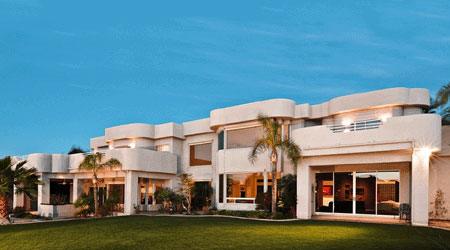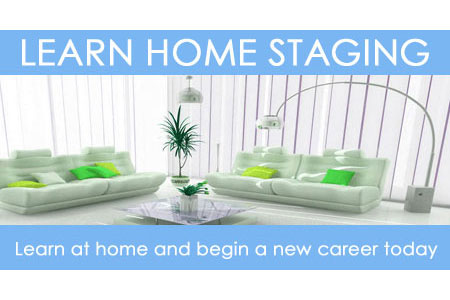
Modern home staging is a decorating strategy which can really add tremendous value to a home or commercial space when used appropriately. Typically, modern staging is far too exclusionary for general uses, but when it can be applied to target the buyer demographic being courted for the property, modern staging can set the ideal tone for a fast and highly profitable rental or sale.
Modern staging may be indicated for real estate which has a modern or ultra-contemporary look and feel. Modern home décor does not always appeal to an average buyer, so home stagers are warned to consider who is likely to purchase any home before preparing any residence in a modern style. Modern staging is often reserved for upscale apartments, loft spaces and starter homes which appeal to young first-time buyers in urban markets.
This guide explores the potential risks and rewards of staging using a purely modern style.
Modern Home Staging Definition
The modern interior style is characterized by clean lines, less color contrast and the use of interesting, innovative materials. Furniture is likely to be constructed from metal, stone or synthetic materials, instead of wood or other natural finishes.
Minimalist design is very common in modern homes, with negative space becoming a crucial design feature. Modern look and feel is not warm, soft and comfy, but instead leans towards stark, cool and utilitarian. Modern décor is not appropriate for most residential properties, since it does not reflect the tastes of most buyers. In the majority of home staging cases, I generally recommend contemporary or classic-contemporary look and feel, since this design sensibility is a buyer favorite year in and year out. In a few cases, traditional home staging may be best utilized to please mostly older or rural buyers.
Modern staging should be reserved for marketing to sophisticated tastes, young professionals and those who are obviously looking to surround themselves with this unique style in modern designed condos and coops in urban environments.
Modern Staging Style
Using modern staging might alienate many buyers. Some buyers simply do not like the style altogether and others simply will not see it as impractical for a family, especially if young children are present. Additionally, modern décor might look out of place in a traditional home or in older construction. Remember that the purpose of home staging is to bring out the best natural highlights of a property, not to try to make it into something which it is not.
Modern staging can be combined with other design styles for a hybrid look, feel and flow. Some of the popular combinations include: modern Asian, modern world style, modern Vastu Shastra and modern Feng Shui. Purely modern design should be left for architecture which already sets the tone for the style to exist comfortably and naturally within the interior space.
Modern design is also fantastic for staging commercial properties, since it lends itself so well to a variety of settings, including: restaurants, galleries, high-end offices, boutiques, salons and spas, as well as some types of retail locations.
Modern Home Staging Editorial
Personally, I do not really like the modern style. It is too cold and harsh for my tastes and I do not find most of the furnishings to be comfortable to the eye or to the body. The benefit of modern staging is that it will truly update any space and make even older construction seem newer and more futuristic.
Quality modern furnishings can be very expensive, but luckily, generic knock-offs are usually available for a fraction of the cost. These items are perfect for staging applications, since the goal is to sell the lifestyle appearance, not actually to use the furnishings long-term.
I generally recommend the contemporary style above the modern in all but the most appropriate uses. In my own business, I have never used modern or recommended it, but I have seen instances where it was used perfectly. That being said, these cases are rare.
The best use of modern décor sense is certainly within the home styling sector, since the design will work great if the client loves this particular look and feel. This way, there is no risk, since all the home stylist has to do is please the present occupant of the space and not think a step ahead to please a yet-unseen potential buyer or renter who may have very different tastes indeed.




